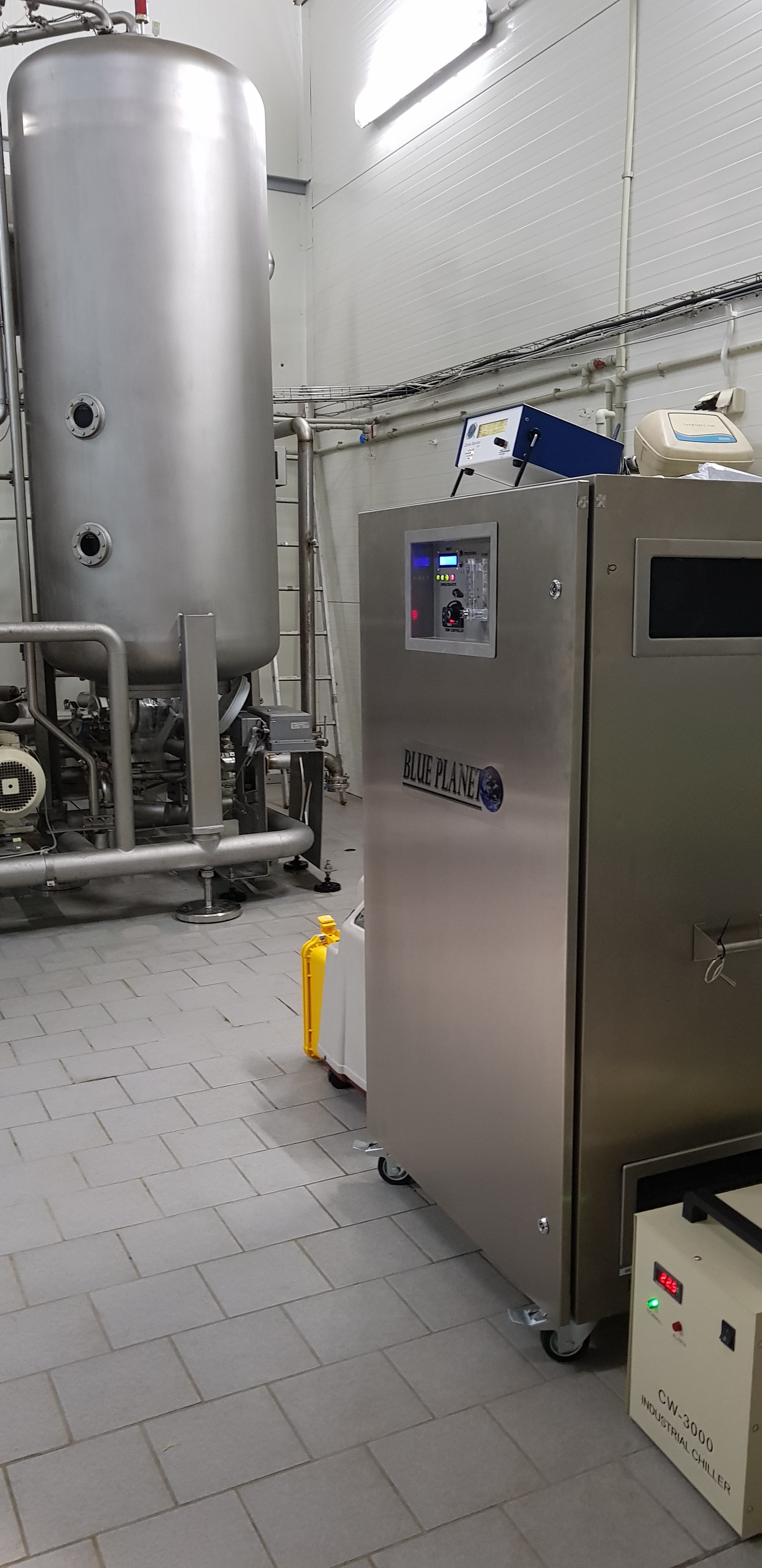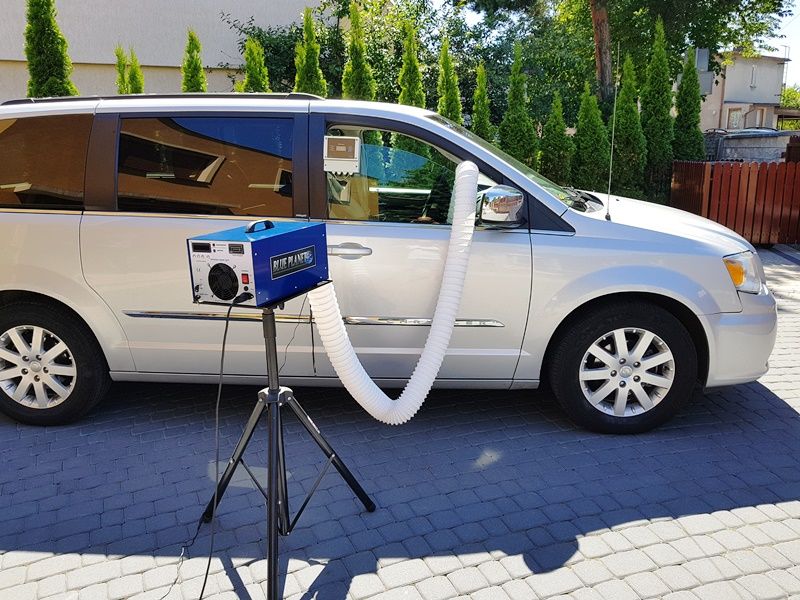- How to choose an ozone generator
- About ozone
- coronavirus
- Water ozonation
- Ozonation of fruit and vegetables
- Contact
- Vehicle ozonation
- Ozone concentration
- Ways of ozonation
- The use of ozone in industry
- Air Ozonizers
- Ozonation of cereals
- Ozone treatment in the meat industry
- Ozonation in cold rooms
- Fire - ozonation
- Ozone breakdown in water
- Allergy
- Ozone compatible materials
- Decontamination of air conditioning with ozone
- Ozone water treatment
- Home ozone generator
- Mushrooms
- Sewage ozonation
- Ozonation of hotel rooms
Drinking water ozonation
It is a fast and efficient water disinfection process compared to other compounds such as chlorine and chlorine dioxide. It is also a natural gas and does not leave harmful by-products as is the case with the use of other disinfectants.
Ozone treatment as an advanced oxidation process is used in technological processes because:
- accelerates some chemical reactions (e.g. oxidation)
- supports filtration processes through agglomerations of molecules
- allows you to effectively remove, among others iron, manganese and ammonia
- accelerates the oxidation of micro-impurities and natural organic matter
- restores water to its natural color and crystal transparency
- removes unpleasant taste and smell from water
- ensures microbiological purity - removes bacteria, viruses, their spores and cysts as well as molds and fungi
Applications of ozone in industry
Using ozone generators or ozone saturated water, ozonation can be used to:
- for rinsing and disinfecting bottles
- in food production for the treatment of production and technological water,
- in the production of mineral water,
- for washing and disinfecting fruit, vegetables, vegetables and meats - delays spoilage and overheating
- for disinfecting rooms
- in ice production - extends the shelf life of frozen food,
- when breeding fish in ponds - in the processes of continuous water treatment and aeration,
- in swimming pools for removing (oxidizing) impurities and disinfecting water
- in closed cycles of mineral water recovery,
- for mineralization, treatment and decolorization of sewage,
- for removing unpleasant odors - deodorization
- Clean In Place (CIP) for disinfecting equipment
Ozone disinfection
Removal of pathogens and the origin of Giardia lamblia and Cryptosporidum parvum is one of the main goals of drinking water treatment. Table 1 summarizes the CT product values required to inactivate 99% of the most important pathogenic organisms. Ozone is the strongest disinfectant and the only effective agent for inactivating cysts and oocysts of parasitic protozoa.
Herbicide and pesticide removal
Most of these substances are effectively oxidized during a full water purification process starting with pre-ozonation and ending with the combination of ozonation and sorption on granular activated carbon
Table 1. CT product values required to inactivate 99% (21og) of microorganisms at 5 + 25 ° C (1)
Microorganism | Ozone pH = 6 + 7 | Chlorine pH = 6 + 7 | Chloramine pH = 8 + 9 | Chlorine dioxide pH = 6 + 7 |
Escherichia coli | 0.02 | 0.03 + 0.05 | 95 + 180 | 0.4 + 180 |
Polyovirus 1 | 0.1 + 0.2 | 1.1 + 2.5 | 770 + 3500 | 0.2 + 6.7 |
rotavirus | 0.006 + 0.06 | 0.01 + 0.05 | 2810 + 6480 | 0.2 + 2.1 |
Giardia lamblia (cysts) | 0.5 + 1.6 | 30 + 150 | + 750 2200 | 10 + 36 |
Cryptosporidiumparvum (oocysts) | 2.5 + 18.4 | 7200 | 7200 (1109) | 78 (1109) |
Typical ozone half-life depending on temperature .
Gas Ozone in ice |
|
| Dissolved in water | (pH 7 ) |
Time | Temperature |
| Time |
|
3 months | -50 * C. |
| 30 minutes | 15 * C. |
18 days | -35 * C. | 20 minutes | 20 * C. | |
8 days | -25 * C. |
| 15 minutes | 25 * C. |
Three days | -20 * C. |
| 12 minutes | 30 * C. |
1.5 minutes | 120 * C |
| 8 minutes | 35 * C. |
1.5 seconds | 250 * C |
These values are based on the thermal composition, wall effects and other catalytic effects are not included
The actual half-life of ozone will be significantly shorter when it comes to organic load, along with pressure, humidity and other factors. These values give a good indication of how quickly ozone decomposes, as well as how high the temperature of the factor affects the half-life of ozone.
Temperature can play both positive and negative effects on ozone applications. When the temperature is very low, the half-life of ozone is very long, however, ozone is much more stable and may not react as soon as we assume. In contrast, when temperatures are very high, the ozone half-life may be so short that there is no time for ozone, or the ozone reaction rate may not be accelerated sufficiently to create the desired reaction in a shorter time. When working with ozone, the key factor will be maintaining proper concentration and temperature.
Equipment and systems for water ozonization
Blue Planet company for industrial applications offers oxygen generators from pressure concentrators. Our devices can be cooled by water or air depending on the operating conditions and power of the device. We offer help in the design of water installations and the method of dosing ozone into water. We offer ozone measuring equipment in water and air.



